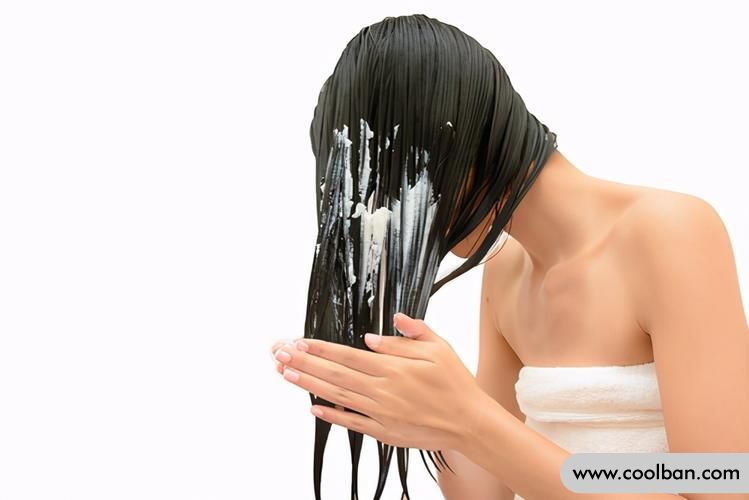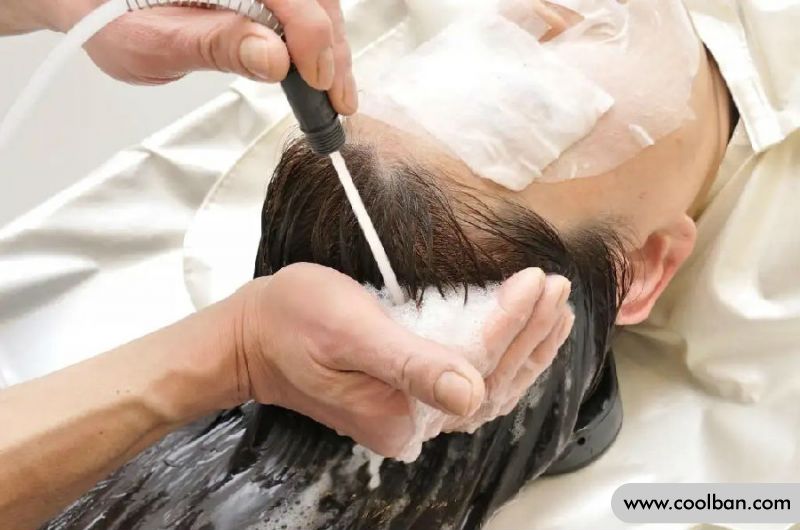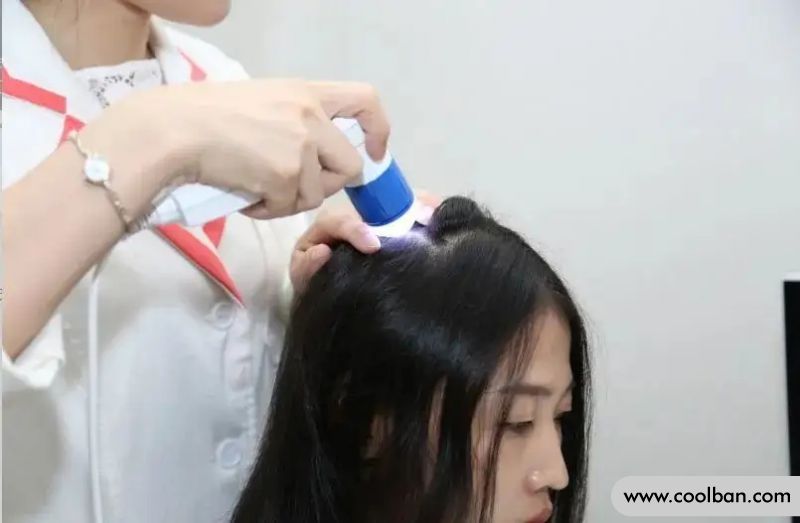What problems can an unhealthy scalp cause?
2022-04-11
Most people know the importance of facial skin care, and they are also very concerned about the so-called "second face" neck and hand care. However, in this era of national skin care, there are still many people habitually ignoring the very important scalp care for another body.
The skin in this area of the scalp ages the fastest in the entire body, 6 times faster than facial skin and 12 times faster than body skin. This is the part of the body with the highest levels of free radicals and the thinnest part of the body excluding the skin around the eyes. The health of your scalp directly affects the skin condition on your face and determines your appearance.
The relationship between scalp and hair is like soil or plants. There is an absolute relationship between them so that fertile soil produces strong plants. A healthy scalp can provide the nutrients needed to keep hair shiny, healthy and bouncy. Therefore, having a healthy scalp can lead to healthy hair.

What is the difference between scalp and facial skin?
It is the same as the basic structure of facial skin, which is composed of epidermis, dermis and subcutaneous tissue.
Compared with facial skin, there are some special places:
Feature 1: The thickness of the scalp is about 1.476mm, the thickness of the cheek skin is about 1.533mm, and the thickness of the nose skin is about 2.040mm. This means that the scalp is thinner than most of the skin on the face.
Feature 2: The density of sebaceous glands on the scalp is about 144-192/square centimeter, the forehead is about 52-79/square centimeter, and the cheek is about 42-78/square centimeter.
Even compared to the oiliest forehead on the face, this means the scalp has twice as many sebaceous glands as the forehead.
Feature 3: The amount of sebum secreted on the surface of the scalp reaches 288 micrograms/square centimeter within 12 hours, while the amount of sebum on the forehead is only 144 micrograms/square centimeter.
In conclusion, the scalp is thinner than the skin on the face, and the secretion of sebum is more active. Cleaning the scalp is more difficult than cleaning the face due to the occlusion of the hair.

Like the health of the facial skin, the health of the scalp also has water and oil balance issues.
For example, dry scalp is often due to too little sebum production or damage to the stratum corneum, which reduces the scalp's ability to retain water. A dry scalp can cause scaling and itching, similar to flaking and dryness of facial skin.
The difference is that when the face peels, it is necessary to take good care of the face and add moisture in various ways to reduce the peeling phenomenon. However, if the head is itchy, it will be scratched, and not only will the symptoms not improve, but if the scratch leaves a scar, it will be more susceptible to infection.
The opposite of dry scalp is oily scalp, which is usually caused by excessive sebum production. An oily scalp can easily accompany dandruff because the fungus that causes dandruff prefers an oily scalp. Hair oils are also prone to odor, making hair sticky and flat.
The scalp contains hair follicles, which are the most important part of hair production and one of the three major oil-producing areas of the human body. Improper cleaning can easily lead to bacterial growth.
The secretion cycle of scalp oil glands is faster than that of facial skin, coupled with the continuous secretion of sebum and the residue of hair dyeing and styling products, it affects the health of the scalp and the health of natural hair.

Four criteria for determining scalp health
Standard 1: Dandruff is invisible to the naked eye
Standard 2: The scalp is relaxed and not tight
Criterion 3: I don't feel itchy
Standard 4: It can maintain a refreshing state for a long time
Precautions: Hair performance can also reflect the health of the scalp, including whether it has strong roots, whether the hair is moist and shiny, the hair is not greasy, and there are no split ends.

Common scalp problems
(1) Oily scalp
When the sebaceous glands are exuberant and oily substances spread to the roots and the entire scalp, the hair can become very greasy within a day after washing.
(2) Itchy scalp
Many people can’t resist scratching when their scalp is itchy, in fact, it’s caused by a fungus, and scratching can cause further damage to the scalp.
(3) Thinning hair
Excessive spillage of scalp fat often leads to increased dandruff, greasy hair, thinning hair from the top of the head, reaching the forehead, and eventually spreading to the entire scalp.

Daily scalp care rules
The above three problems are encountered more or less in our daily life, and you don't need to worry too much. In addition to the serious need to go to the hospital, it is good to do three habits from time to time:
1. Choose a mild cleansing care product: Choose a mild weakly acidic amino acid shampoo and wash your hair with warm water at 34-42°C, which has an excellent cleansing effect.
2. Take a gentle shampooing action: in the process of shampooing, on the one hand, rub the scalp with the pulp of the finger, on the one hand, reduce the physical stimulation of the nails to the scalp, on the other hand, do not damage the scalp. Nails harbor a lot of bacteria, which can infect and inflame the skin, so remember to rinse to avoid shampoo residue.
The skin in this area of the scalp ages the fastest in the entire body, 6 times faster than facial skin and 12 times faster than body skin. This is the part of the body with the highest levels of free radicals and the thinnest part of the body excluding the skin around the eyes. The health of your scalp directly affects the skin condition on your face and determines your appearance.
The relationship between scalp and hair is like soil or plants. There is an absolute relationship between them so that fertile soil produces strong plants. A healthy scalp can provide the nutrients needed to keep hair shiny, healthy and bouncy. Therefore, having a healthy scalp can lead to healthy hair.

What is the difference between scalp and facial skin?
It is the same as the basic structure of facial skin, which is composed of epidermis, dermis and subcutaneous tissue.
Compared with facial skin, there are some special places:
Feature 1: The thickness of the scalp is about 1.476mm, the thickness of the cheek skin is about 1.533mm, and the thickness of the nose skin is about 2.040mm. This means that the scalp is thinner than most of the skin on the face.
Feature 2: The density of sebaceous glands on the scalp is about 144-192/square centimeter, the forehead is about 52-79/square centimeter, and the cheek is about 42-78/square centimeter.
Even compared to the oiliest forehead on the face, this means the scalp has twice as many sebaceous glands as the forehead.
Feature 3: The amount of sebum secreted on the surface of the scalp reaches 288 micrograms/square centimeter within 12 hours, while the amount of sebum on the forehead is only 144 micrograms/square centimeter.
In conclusion, the scalp is thinner than the skin on the face, and the secretion of sebum is more active. Cleaning the scalp is more difficult than cleaning the face due to the occlusion of the hair.

Like the health of the facial skin, the health of the scalp also has water and oil balance issues.
For example, dry scalp is often due to too little sebum production or damage to the stratum corneum, which reduces the scalp's ability to retain water. A dry scalp can cause scaling and itching, similar to flaking and dryness of facial skin.
The difference is that when the face peels, it is necessary to take good care of the face and add moisture in various ways to reduce the peeling phenomenon. However, if the head is itchy, it will be scratched, and not only will the symptoms not improve, but if the scratch leaves a scar, it will be more susceptible to infection.
The opposite of dry scalp is oily scalp, which is usually caused by excessive sebum production. An oily scalp can easily accompany dandruff because the fungus that causes dandruff prefers an oily scalp. Hair oils are also prone to odor, making hair sticky and flat.
The scalp contains hair follicles, which are the most important part of hair production and one of the three major oil-producing areas of the human body. Improper cleaning can easily lead to bacterial growth.
The secretion cycle of scalp oil glands is faster than that of facial skin, coupled with the continuous secretion of sebum and the residue of hair dyeing and styling products, it affects the health of the scalp and the health of natural hair.

Four criteria for determining scalp health
Standard 1: Dandruff is invisible to the naked eye
Standard 2: The scalp is relaxed and not tight
Criterion 3: I don't feel itchy
Standard 4: It can maintain a refreshing state for a long time
Precautions: Hair performance can also reflect the health of the scalp, including whether it has strong roots, whether the hair is moist and shiny, the hair is not greasy, and there are no split ends.

Common scalp problems
(1) Oily scalp
When the sebaceous glands are exuberant and oily substances spread to the roots and the entire scalp, the hair can become very greasy within a day after washing.
(2) Itchy scalp
Many people can’t resist scratching when their scalp is itchy, in fact, it’s caused by a fungus, and scratching can cause further damage to the scalp.
(3) Thinning hair
Excessive spillage of scalp fat often leads to increased dandruff, greasy hair, thinning hair from the top of the head, reaching the forehead, and eventually spreading to the entire scalp.

Daily scalp care rules
The above three problems are encountered more or less in our daily life, and you don't need to worry too much. In addition to the serious need to go to the hospital, it is good to do three habits from time to time:
1. Choose a mild cleansing care product: Choose a mild weakly acidic amino acid shampoo and wash your hair with warm water at 34-42°C, which has an excellent cleansing effect.
2. Take a gentle shampooing action: in the process of shampooing, on the one hand, rub the scalp with the pulp of the finger, on the one hand, reduce the physical stimulation of the nails to the scalp, on the other hand, do not damage the scalp. Nails harbor a lot of bacteria, which can infect and inflame the skin, so remember to rinse to avoid shampoo residue.
